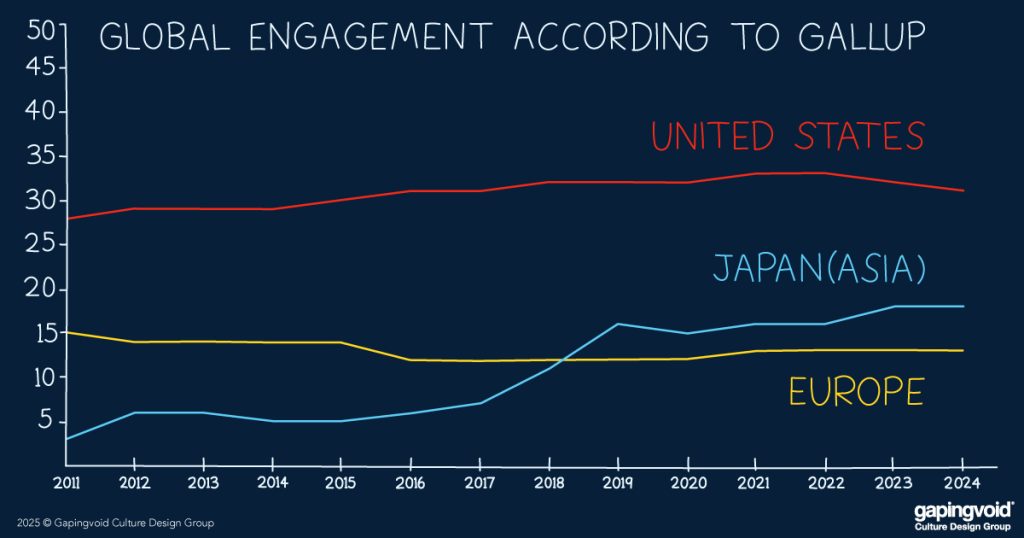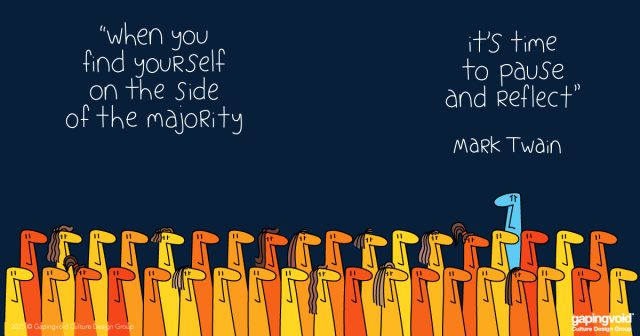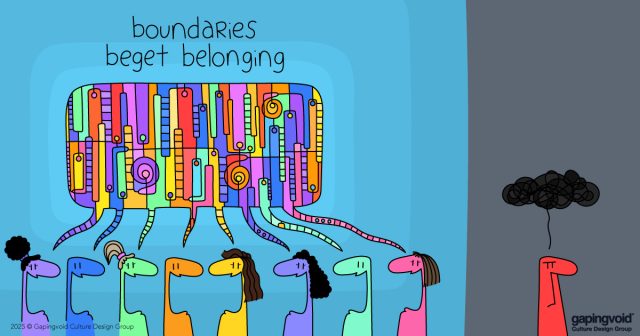
There’s been a popular statistic floating around for years from Gallup about how only 38% of the US workforce feels engaged at work. They claim this is a $8.8 Trillion problem. Of course it is because that helps sell more engagement surveys. But we digress.
Apparently engagement rates have gotten worse recently, now at 31% in the US, the lowest in a decade, and down to 10% in the UK – the second-worst engagement rate in Europe, after Cyprus.
How much more effective would our organizations be if we could nudge the number up to 38% or even 60%?
You’d think with disappointing numbers like these, raising them would be a top priority, right?
So why is this nearly never the case?
Short answer: Because almost nobody knows what to do. We say we want to grow “engagement,” but employee engagement is, by definition, just a feeling.
Feelings matter for performance at work. And they are complex, fickle things.
Think about how you feel about anything important in your life. Do you love your spouse every day? Your kids? The favorite restaurant you swear by? Of course not. Feelings change based on your last argument or experience. Some days we’re annoyed or distracted. And it IS possible to love and hate a thing simultaneously.
Just because satisfaction with supervisors averaged a rating of 7.3 on a Tuesday in April doesn’t mean we should use that number to drive business decisions. It’s reductive and tells us nothing about the “why.” Oh, and the number will have already changed by the time the results are in.
The other problem is that the data is only the first part of the equation. The real issue is that despite consultants having made entire industries out of measuring these feelings, there’s been little to no focus on how to change them. Gallup’s multi-decade measurement of the problem is a case in point. Lots of numbers and no solutions.
While groups swear by psychological safety workshops and inclusion training (how’s that working out?) as a fix for the false proxy of “engagement,” they’re missing the reality of how culture operates.
The truth is, organizational cultures are black boxes. Complex systems that, by definition, are unknowable. We can ask twelve ‘perfect’ questions, and still have no idea how to make the culture better. Measurement alone doesn’t lead to improvement.
The only thing to do in this instance is not to try to peer inside the box but watch what emerges from it. Then we can change the inputs to the system to get different outputs.
Culture is a system, and system design is not the same as survey design.
The high-performing organizations we all admire (or used to) – Apple, Lululemon, Southwest – don’t have great cultures by accident. They’ve been engineered. Deliberately. With the same rigor required to design any other critical business system.
But that’s not what the majority of businesses are doing today. Culture continues to get treated like the weather. Something to be observed. Measured. Prepared for.
We can continue to deal with it based on false proxies with pretend remedies. Or we can throw out the umbrella and engineer it. The difference between the two is everything.



